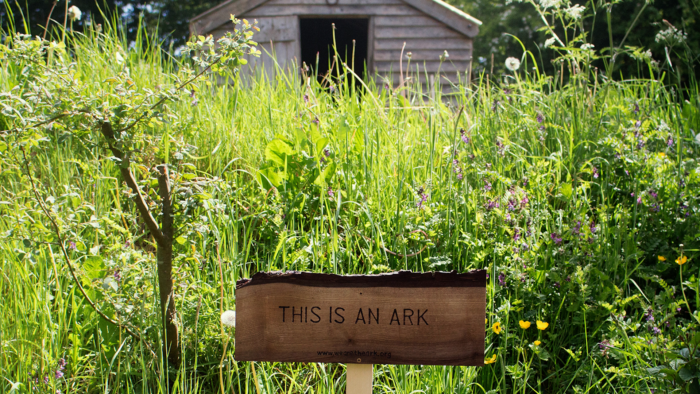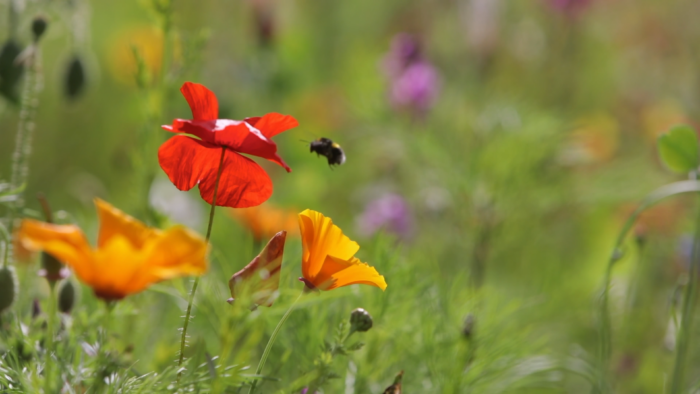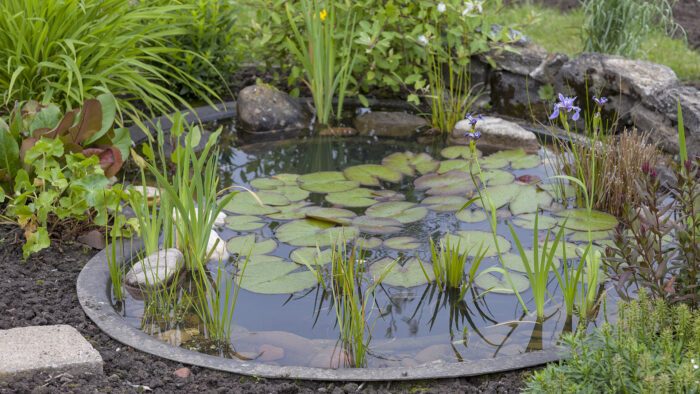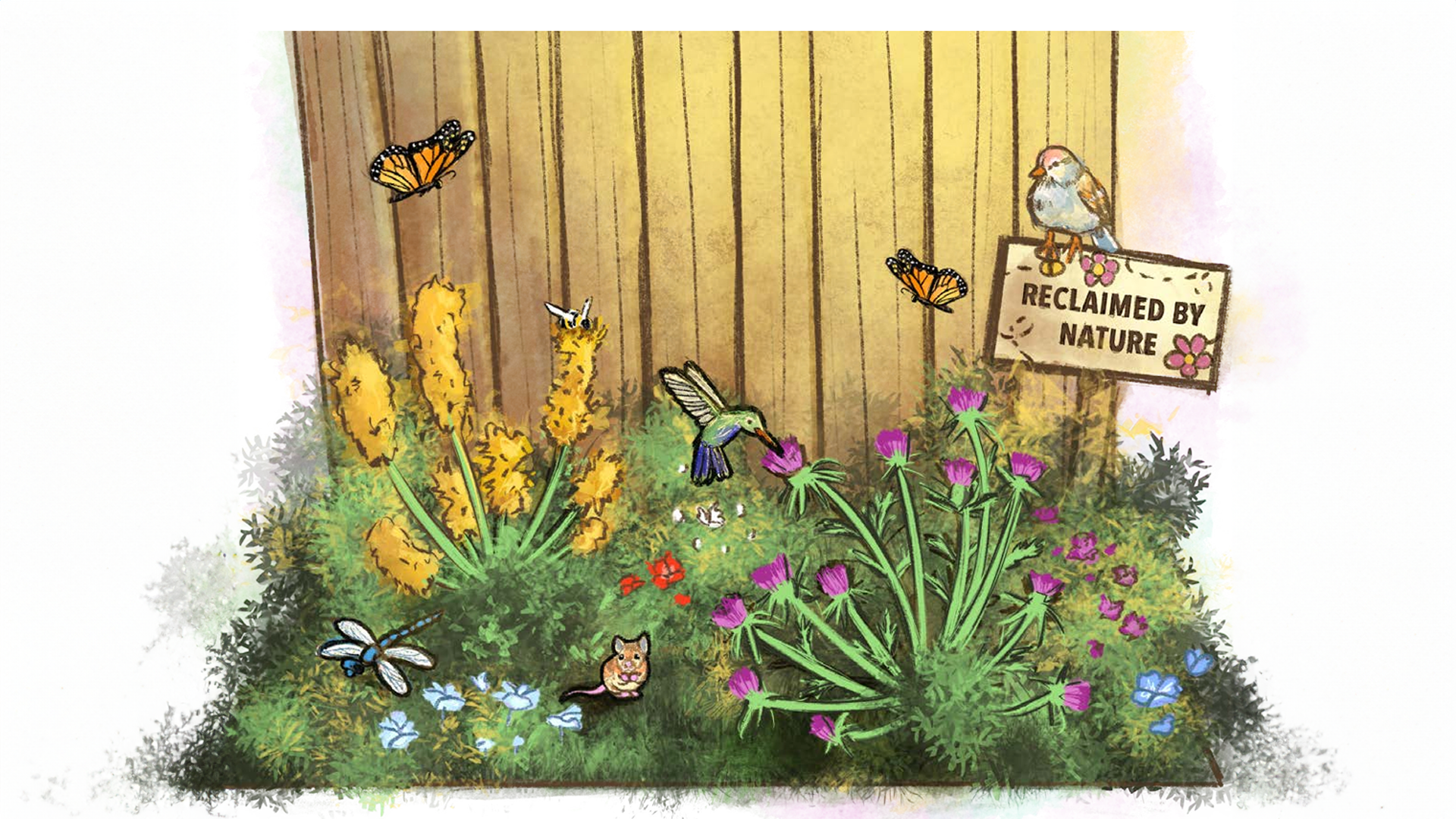When you’re looking for a place to call home, you’re going to have a mental checklist: Is the neighborhood nice? Do you feel safe? Are there green spaces? Nice restaurants nearby?
Wildlife looking for a place to rest have their own checklist, but in many cases, our yards or neighborhoods don’t meet their needs. With just a few changes, you can transform your yard or balcony from a wildlife desert into a wildlife sanctuary. And if you convince your neighbors to do the same, you could even make your neighborhood into a habitat corridor for wildlife!
Below are a few ways to turn any available natural space into part of a wildlife corridor. You can start by choosing one that works best for your lifestyle, or you could try them all for maximum benefits to your local birds, mammals, and amphibians!
First, Do Nothing!
That’s right, one of the easiest ways to help wildlife on your own patch of land is to stop doing things — what could be easier than that? That might mean phasing out chemical pesticides in your yard and garden to help native pollinators. Or, mowing your yard less frequently or not at all in the spring. You could even stop mowing a patch of land entirely and see which native plants grow! If you decide to do this, consider joining the “We are the ARK” movement and placing a sign in your yard to let neighbors know what you’re up to.

Create a Pollinator Garden
Pollinator gardens filled with native flowers have all sorts of benefits. They add color and beauty to your yard while attracting important pollinators like bumblebees and butterflies. These pollinators, in turn, attract songbirds that rely on high-energy food like caterpillars to feed their chicks.
To grow a pollinator garden, first research flowers native to your area and buy a wildflower seed mix. If you’re unsure where to start, the Xerces Society, a nonprofit focused on pollinator conservation, has some pre-packaged seed mixes grouped by region. Next, set aside an hour of your afternoon, grab friends or family, and use your seed mix to make seed bombs by following Wild Hope’s step-by-step guide!
If you want to take things a step further and link your new native garden to a national movement, consider sharing your garden with Homegrown National Park or join thousands of other backyard conservationists in taking the Pollinator Protection Pledge.

Add a Water Feature
Have you ever been near a lake at dusk and heard the sudden swell of frog song echoing out over the water? Why not bring that magical experience to your own backyard?
Frogs, toads, and salamanders all need water during the early stages of their life cycle, but many amphibian populations are declining due to habitat loss. You can create your own little frog oasis—and get a free mosquito control service in the process—by adding a pond to your yard.
To get started, follow Wild Hope’s step-by-step guide on how to build a frog pond!

Make your House Bird-Friendly
With all those extra insects and amphibians in your yard, birds will flock to your house. When they do, make sure they get a warm welcome by making your house bird-friendly.
Birds get confused by windows when they see trees and sky reflected back at them, leading to deadly collisions. In fact, window collisions are one of the biggest threats facing many bird species. Luckily, there are some easy things you can do to reduce the chance of a bird hitting your house. First, turn off lights after dark, especially during peak migration season when millions of birds are navigating by the stars. That will ensure the birds aren’t confused by your artificial light source.
Next, make your windows bird-friendly. That can mean anything from purchasing bird-friendly glass to placing special decals on your windows to deter birds. American Bird Conservancy is a great place to start looking for the products that might work best for you.
Invite Others to Join You!
If you try any of these techniques to make your yard a wildlife corridor, consider asking your friends to join in! The more wildlife-friendly yards there are, the more habitat there is for local wildlife. By involving your neighbors and local leaders in your efforts, your yard can go from an isolated stopover point to part of a bustling wildlife corridor. Send your friends the Wild Hope episodes Gardener to Guardian or Vertical Meadows for some added inspiration. And when you start successfully attracting wildlife to your yard, consider taking your efforts a step further by logging your observations with a citizen science project.
Finally, let us know which actions you take and species you attract by tagging Wild Hope on Instagram @wildhopetv!
